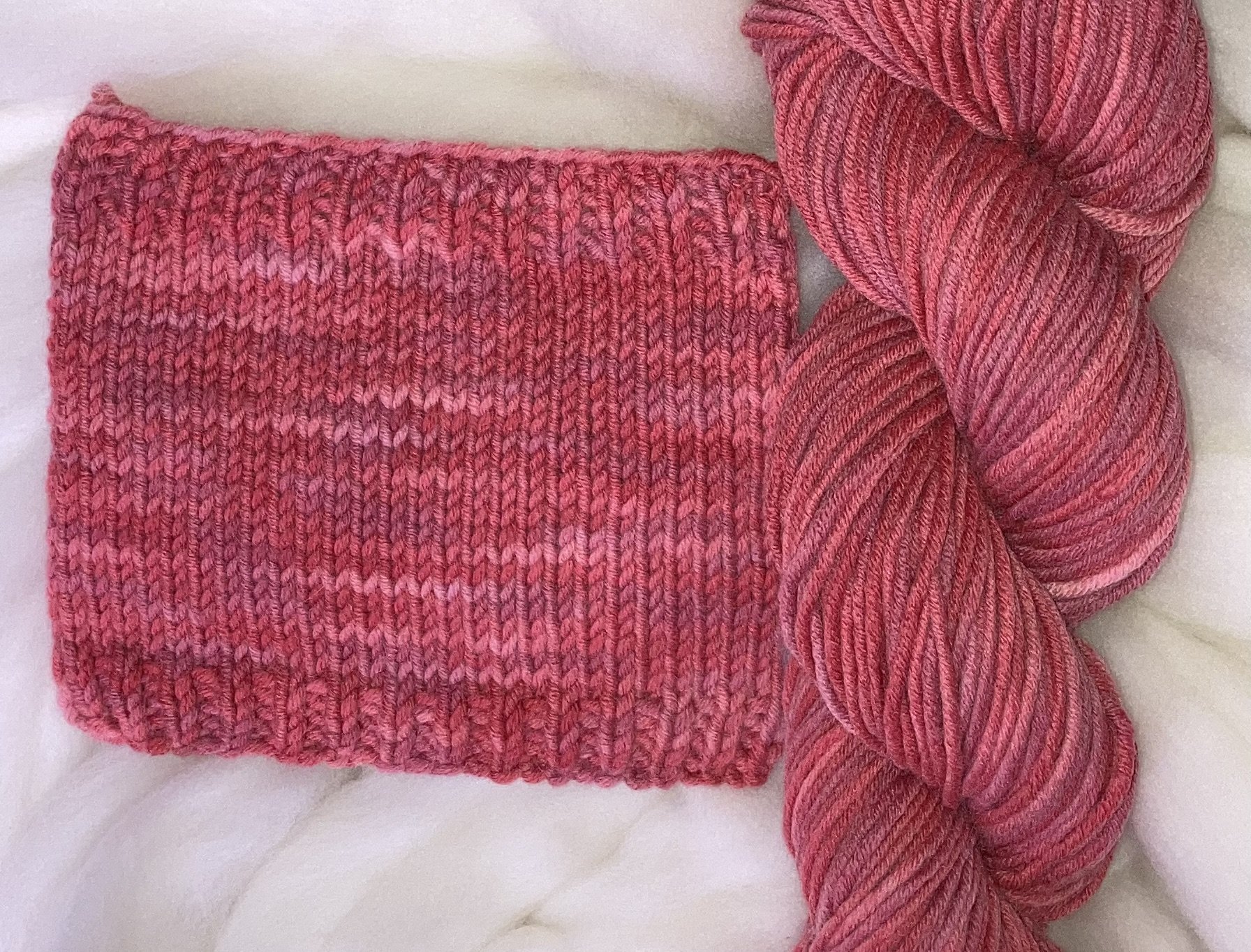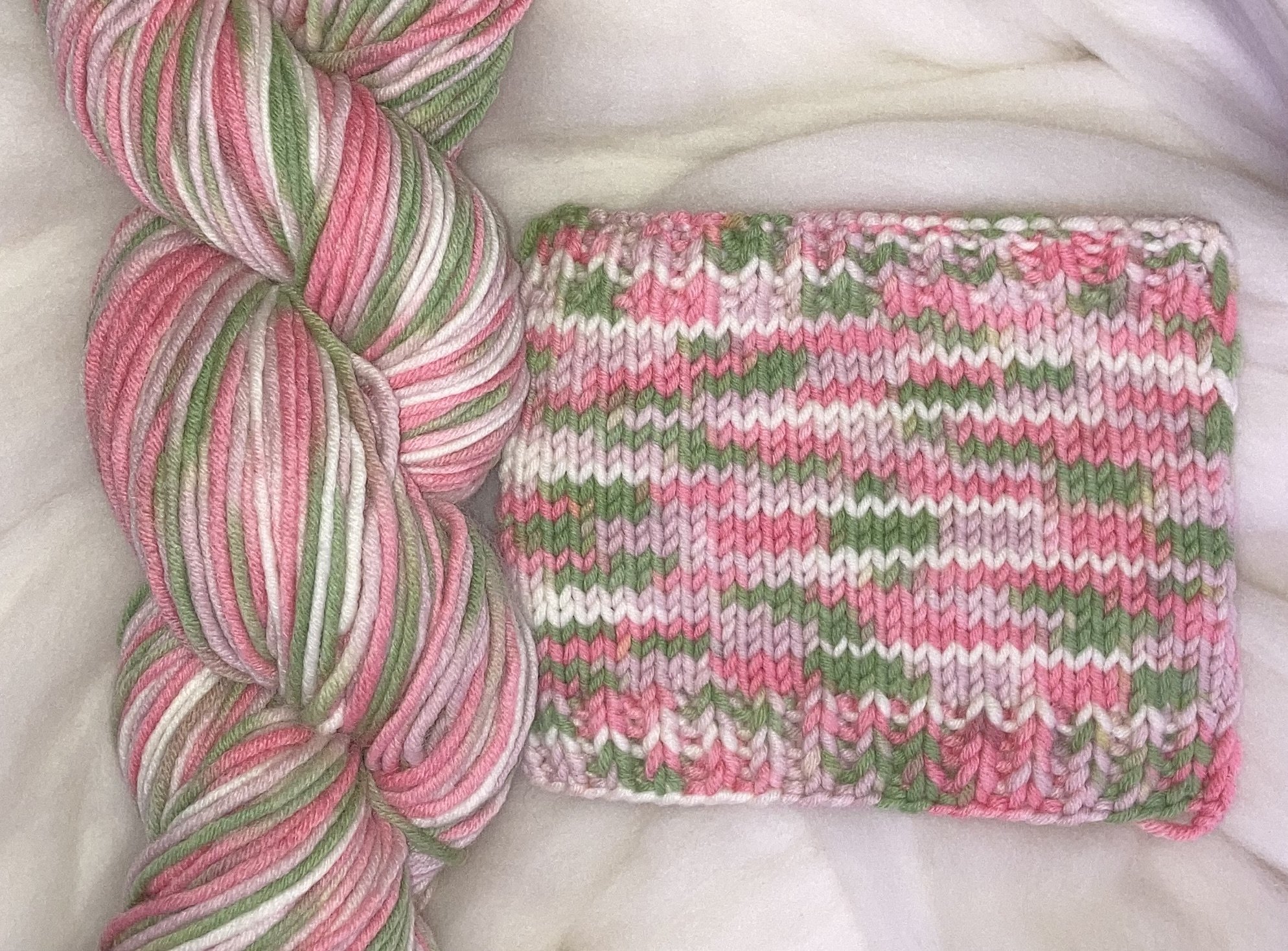WGW is 10 years old this year, and we’re so excited to share two new colours as part of our celebration! Last year I asked Rebecca Robinson of Augustbird to create a multi-coloured yarn that would go well with our popular neutrals, quarrystone and gum grey. In the end, I couldn’t choose between Rose Hip, a subtle tonal in shades of magenta, and Apple Blossom, a bright spring colour way with lots of contrast, so I decided to do both! They are now available in our our new 10 ply Aran yarn, as well as our 4 ply fingering, 8 ply DK, 12 ply boucle and rope yarn weights.
Who is Rebecca Robinson?
Rebecca has been part of the WGW journey nearly from the start. When WGW started, Rebecca’s Augustbird hand-dyed yarn business was already well-established. She was the first hand-dyer to use WGW undyed yarns as a base, and has used them exclusively ever since.
Rebecca went on to design three multis for WGW: Silver tussock, Ashmore and Wildflower. Creating a multi-coloured yarn that looks as good knitted up as it does in the skein is an art, one Rebecca has mastered. The swatches below of Rose Hip and Apple Blossom give you an idea of how a finished garment will look.
Interview: Rebecca talks about designing yarn colours for WGW
Rebecca’s design process involves a couple of steps you might not expect. “My process is more fluid and organic than scientific”, says Rebecca.
She starts by putting the project on background, and lets her ideas percolate for a while. “It’s the brewing phase. It’s not procrastination”, she says. “It’s part of the flow.” From there she moves into an experiential stage, where she tries to find the essence of whatever she is designing.
“With Apple Blossom, we have some apple trees on our place, so I spent time with them, touching the bark with my eyes closed and trying to get in tune with the trees.”
Only when she’s worked through the first two stages does she start the hands-on process of dyeing.
Designing for a commercially dyed project has its own challenges, as the commercial process is much more limited in scope than a hand-dyer.
“I’ve learned not to focus on what the mill might or might not be able to reproduce, but rather on doing what I do best—designing beautiful colour combinations. I have to leave it to the mill to figure out how to reproduce my designs.”





